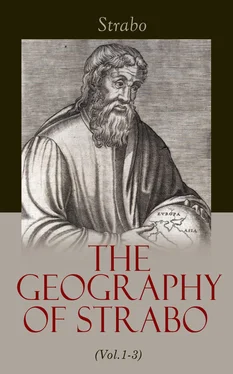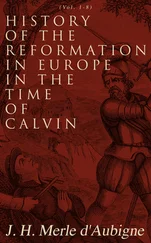Strabo - The Geography of Strabo (Vol.1-3)
Здесь есть возможность читать онлайн «Strabo - The Geography of Strabo (Vol.1-3)» — ознакомительный отрывок электронной книги совершенно бесплатно, а после прочтения отрывка купить полную версию. В некоторых случаях можно слушать аудио, скачать через торрент в формате fb2 и присутствует краткое содержание. Жанр: unrecognised, на английском языке. Описание произведения, (предисловие) а так же отзывы посетителей доступны на портале библиотеки ЛибКат.
- Название:The Geography of Strabo (Vol.1-3)
- Автор:
- Жанр:
- Год:неизвестен
- ISBN:нет данных
- Рейтинг книги:3 / 5. Голосов: 1
-
Избранное:Добавить в избранное
- Отзывы:
-
Ваша оценка:
- 60
- 1
- 2
- 3
- 4
- 5
The Geography of Strabo (Vol.1-3): краткое содержание, описание и аннотация
Предлагаем к чтению аннотацию, описание, краткое содержание или предисловие (зависит от того, что написал сам автор книги «The Geography of Strabo (Vol.1-3)»). Если вы не нашли необходимую информацию о книге — напишите в комментариях, мы постараемся отыскать её.
The Geography of Strabo (Vol.1-3) — читать онлайн ознакомительный отрывок
Ниже представлен текст книги, разбитый по страницам. Система сохранения места последней прочитанной страницы, позволяет с удобством читать онлайн бесплатно книгу «The Geography of Strabo (Vol.1-3)», без необходимости каждый раз заново искать на чём Вы остановились. Поставьте закладку, и сможете в любой момент перейти на страницу, на которой закончили чтение.
Интервал:
Закладка:
10. Near to these regions dwell the Iapodes, (a nation now mixed with the Illyrians, and Kelts,) close to them is [the Mount] Ocra. 1553Formerly the Iapodes were numerous, inhabiting either side of the mountain, and were notorious for their predatory habits, but they have been entirely reduced and brought to subjection by Augustus Cæsar. Their cities are Metulum, 1554Arupenum, 1555Monetium, 1556and Vendon. 1557After these is the city of Segesta, 1558[situated] in a plain. Near to it flows the river Save, 1559which discharges itself into the Danube. This city lies in an advantageous position for carrying on war against the Dacians. 1560Ocra forms the lowest portion of the Alps, where they approach the territory of the Carni, and through which they convey the merchandise of Aquileia in waggons to Pamportus. 1561This route is not more than 400 stadia. From thence they convey it by the rivers as far as the Danube and surrounding districts, for a navigable river 1562which flows out of Illyria, passes by Pamportus, and discharges itself into the Save, so that the merchandise may easily be carried down both to Segesta, and to the Pannonians, and Taurisci. 1563It is near this city, 1564that the Kulp 1565falls into the Save. Both of these rivers are navigable, and flow down from the Alps. The Alps contain wild horses and cattle, and Polybius asserts that an animal of a singular form is found there; it resembles a stag except in the neck and hair, which are similar to those of a wild boar; under its chin it has a tuft of hair about a span long, and the thickness of the tail of a young horse. 1566
11. One of the passages over the mountains from Italy into Transalpine and northern Keltica is that which passes through the country of the Salassi, and leads to Lugdunum. 1567This [route] is divided into two ways, one practicable for carriages, but longer, which crosses the country of the Centrones, the other steep and narrow, but shorter; this crosses the Pennine [Alps]. Lugdunum is situated in the midst of the country, serving as an Acropolis, both on account of the confluence of [Pg 310] [CAS. 208] the rivers, and of its being equally near to all parts. It was on this account that Agrippa cut all the roads from this [as a centre] one running through the mountains of the Cevennes to the Santones 1568and Aquitaine, 1569another towards the Rhine; a third towards the ocean by the country of the Bellovaci 1570and Ambiani, 1571and a fourth towards the Narbonaise and the coast of Marseilles. 1572The traveller, also, leaving Lugdunum and the country above on his left, may pass over the Pennine Alps themselves, the Rhone, or Lake Leman, into the plains of the Helvetii, whence there is a passage through Mount Jura into the country of the Sequani, and Lingones; here the road separates into two routes, one running to the Rhine, and the other 1573to the ocean.
12. Polybius tells us that in his time the gold mines were so rich about Aquileia, but particularly in the countries of the Taurisci Norici, that if you dug but two feet below the surface you found gold, and that the diggings [generally] were not deeper than fifteen feet. In some instances the gold was found pure in lumps about the size of a bean or lupin, and which diminished in the fire only about one eighth; and in others, though requiring more fusion, was still very profitable. Certain Italians 1574aiding the barbarians in working [the mines], in the space of two months the value of gold was diminished throughout the whole of Italy by one third. The Taurisci on discovering this drove out their fellow-labourers, and only sold the gold themselves. Now, however, the Romans possess all the gold mines. Here, too, as well as in Iberia, the rivers yield gold-dust as well as the diggings, though not in such large quantities. The same writer, speaking of the extent and height of the Alps, compares with them the largest mountains of Greece, such as Taygetum, 1575Lycæum, 1576Parnassus, 1577Olympus, 1578Pelion, 1579Ossa, 1580and of Thrace, as the Hæmus, Rhodope, and Dunax, saying that an active person might almost ascend any of these in a single day, and go round them in the same time, whereas five days would not be sufficient to ascend the Alps, while their length along the plains extends 2200 stadia. 1581He only names four passes over the mountains, one through Liguria close to the Tyrrhenian Sea, 1582a second through the country of the Taurini, 1583by which Hannibal passed, a third through the country of the Salassi, 1584and a fourth through that of the Rhæti, 1585all of them precipitous. In these mountains, he says, there are numerous lakes; three large ones, the first of which is Benacus, 1586500 stadia in length and 130 in breadth, the river Mincio flows from it. The second is the Verbanus, 1587400 stadia [in length], and in breadth smaller than the preceding; [Pg 312] [CAS. 209] the great river Ticino 1588flows from this [lake]. The third is the Larius, 1589its length is nearly 300 stadia, and its breadth 30, the river Adda flows from it. All these rivers flow into the Po. This is what we have to say concerning the Alpine mountains.
BOOK V.
ITALY.
Table of Contents
SUMMARY.
The Fifth Book contains a description of Italy from the roots of the Alps to the Strait of Sicily, the Gulf of Taranto, and the region about Posidonium; likewise of Venetia, Liguria, Agro Piceno, Tuscany, Rome, Campania, Lucania, Apulia, and the islands lying in the sea between Genoa and Sicily.
CHAPTER I.
Table of Contents
1. At the foot of the Alps commences the region now known as Italy. The ancients by Italy merely understood Œnotria, which reached from the Strait of Sicily to the Gulf of Taranto, and the region about Posidonium, 1590but the name has extended even to the foot of the Alps; comprehending on one side that portion of Liguria situated by the sea, from the confines of Tyrrhenia to the Var; and on the other, that portion of Istria which extends as far as Pola. It seems probable that the first inhabitants were named Italians, and, being successful, they communicated their name to the neighbouring tribes, and this propagation [of name] continued until the Romans obtained dominion. Afterwards, when the Romans conferred on the Italians the privileges of equal citizenship, and thought fit to extend the same honour to the Cisalpine Galatæ and Heneti, 1591they comprised the whole under the general denomination of Italians and Romans; they likewise founded amongst them numerous colonies, some earlier, some later, of which it would be difficult to say which are the most considerable.
2. It is not easy to describe the whole of Italy under any one geometrical figure; although some say that it is a promontory of triangular form, extending towards the south and winter rising, with its apex towards the Strait of Sicily, and [Pg 314]
[CAS. 210] its base formed by the Alps.... [No one can allow this definition either for the base or one of the sides,] although it is correct for the other side which terminates at the Strait, and is washed by the Tyrrhenian Sea. But a triangle, properly so called, is a rectilinear figure, whereas in this instance both the base and the sides are curved. So that, if I agree, I must add that the base and the sides are of a curved figure, and it must be conceded to me that the eastern side deviates, as well; otherwise they have not been sufficiently exact in describing as one side that which extends from the head of the Adriatic to the Strait [of Sicily]. For we designate as a side a line without any angle; now a line without any angle is one which does not incline to either side, or but very little; whereas the line from Ariminum 1592to the Iapygian promontory, 1593and that from the Strait [of Sicily] to the same promontory, incline very considerably. The same I consider to be the case with regard to the lines drawn from the head of the Adriatic and Iapygia, for meeting about the neighbourhood of Ariminum and Ravenna, they form an angle, or if not an angle, at least a strongly defined curve. Consequently, if the coast from the head [of the Adriatic] to Iapygia be considered as one side, it cannot be described as a right line; neither can the remainder of the line from hence to the Strait [of Sicily], though it may be considered another side, be said to form a right line. Thus the figure [of Italy] may be said to be rather quadrilateral than trilateral, and can never without impropriety be called a triangle. It is better to confess that you cannot define exactly ungeometrical figures.
Читать дальшеИнтервал:
Закладка:
Похожие книги на «The Geography of Strabo (Vol.1-3)»
Представляем Вашему вниманию похожие книги на «The Geography of Strabo (Vol.1-3)» списком для выбора. Мы отобрали схожую по названию и смыслу литературу в надежде предоставить читателям больше вариантов отыскать новые, интересные, ещё непрочитанные произведения.
Обсуждение, отзывы о книге «The Geography of Strabo (Vol.1-3)» и просто собственные мнения читателей. Оставьте ваши комментарии, напишите, что Вы думаете о произведении, его смысле или главных героях. Укажите что конкретно понравилось, а что нет, и почему Вы так считаете.












![Anne Blunt - A Pilgrimage to Nejd, the Cradle of the Arab Race. Vol. 2 [of 2]](/books/750183/anne-blunt-a-pilgrimage-to-nejd-the-cradle-of-the-thumb.webp)